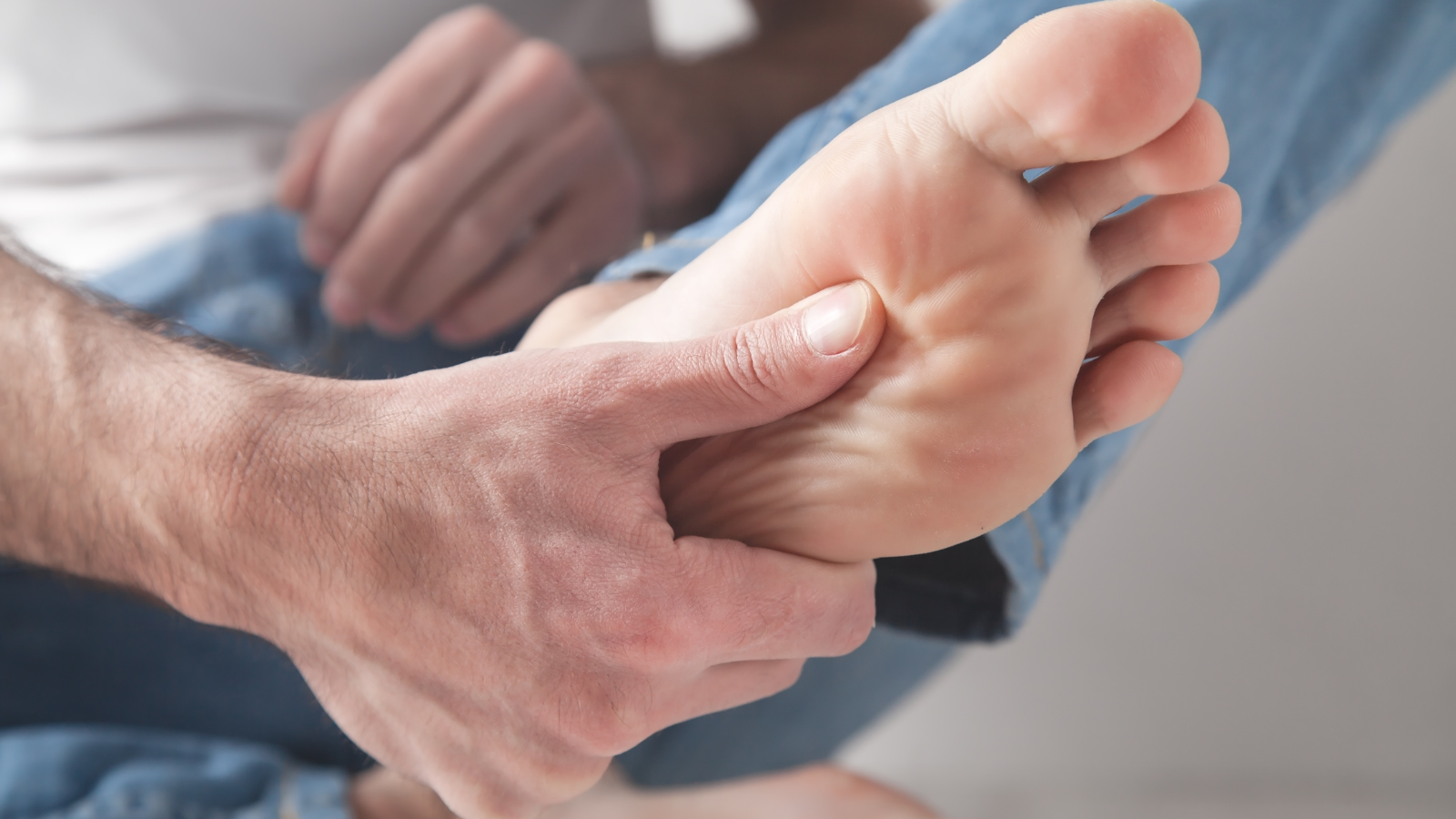The good news is that there are some easy things you can do to help prevent any issues from becoming more serious.
Heel pain
It can be debilitating, affecting walking and posture. The most common cause is plantar fasciitis when the ligament that runs under the heel becomes swollen.
Who gets it?
It can affect anyone at any age but is most common in those in their 40s or in athletes.
What can I do myself to help prevent or manage it?
- Wear well-fitting shoes, with good heel cushioning and arch support.
- Avoid walking or exercising on hard ground.
- Rest regularly and try not to walk or run too fast.
- Wear a raised heel (no more than 6-10 mm higher than normal).
Athlete’s foot
A fungal infection that commonly affects dry, flaky areas, like the heel – but can also occur on moist areas of skin, such as between the toes.
Who gets it?
Anyone. Walking barefoot around swimming pools or wearing the same shoes continuously may make you more likely to pick it up.
What can I do myself to help prevent or manage it?
- If it’s affecting dry areas, ask your pharmacist for an anti-fungal cream or spray.
- If it’s in moist areas, wash your feet in cold water then dry them thoroughly – dab, don’t rub.
- Avoid using moisturiser or powders in between the toes.
- Applying surgical spirit can help reduce moisture, but only use on unbroken skin.
- If it is persistent, see a podiatrist.
Bunions
A bony lump on the side of your foot where the big toe excessively angles towards the second toe.
Who gets it?
Although anyone can get a bunion, they tend to be more common in women.
What can I do myself to help prevent or manage it?
- Give your toes room to move by opting for wider shoes.
- If you wear high-heeled shoes, do so in moderation.
- If you want to wear a heel every day, keep heel heights to 4cm or less – and vary your heel heights from day to day.
- Choose shoes with laces, or a strap or buckle over the instep.
- If the bunion becomes inflamed or troublesome, see a podiatrist.
Corns and calluses
Hard, thickened areas of skin, caused in response to rubbing, friction or pressure on the skin.
Who gets it?
They can affect anyone, but may be caused by badly fitting shoes or a biomechanical irregularity in your feet.
What can I do myself to help prevent or manage it?
- Gently rub the area with a pumice stone or foot file when you are in the bath.
- Moisturising cream may help soften the thickened skin.
Ingrowing toenails
Develops when the side of a toenail pierces through the flesh of your toe, making it red, inflamed and painful. It most commonly affects the big toe.
Who gets it?
Anyone, but particularly people who cut their nails incorrectly leaving small spikes of nail behind. Sporty people are more prone because they are likely to get moist, sweaty feet – this can make the skin around the toenails softer and easier for a nail to pierce.
What can I do myself to help prevent or manage it?
- Cut your nails properly – straight across, making sure not to trim them too low at the edge or down the side. Leave the corner of the nail so it’s visible above the skin. Doing it after a bath or shower is helpful, when your nails are softer.
- Avoid moist feet by rotating your shoes and choosing well-fitting socks and shoes made from natural materials.
- At home get your feet out and let the air get to your toes as much as possible!
If you are fed up with any of these problems, book an appointment with us.


